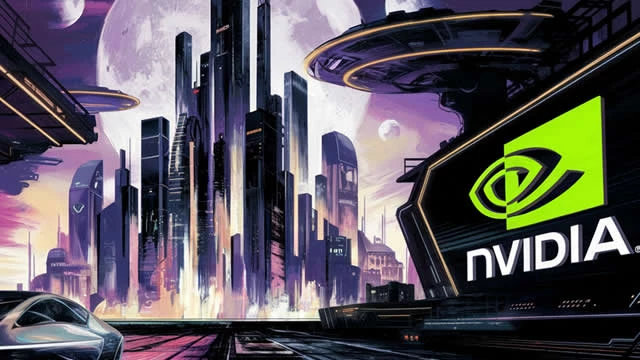Unleashing The Future: A Look at NVIDIA's Groundbreaking Advancements
In a world where artificial intelligence (AI) has become the cornerstone of technology, the rules of computing are undergoing a dramatic transformation. Enter NVIDIA's (NASDAQ: NVDA) latest announcement, which might just signify the dawn of a new era in computing. It's the kind of innovation that will likely become the bedrock of AI's future, revolutionizing how data centers and computer graphics function.
A New Era of Generative AI
In what appears to be a masterstroke, NVIDIA has crafted a novel processor designed specifically for generative AI. Named the Grace Hopper, or GH200, this processor stands at the forefront of technology, signaling a significant departure from general-purpose computing.
With 72 cores, 5 terabytes per second of hbm3e performance, and a computing node that combines two processors into a super-sized Superchip, the Grace Hopper is indeed a marvel. But it's not just about the figures; this chip will have applications in some of the world's most advanced data centers.
NVIDIA isn't just stopping at creating a processor; they're giving it a boost. By enhancing the GH200 with the world's fastest memory, hbm3e, NVIDIA takes the efficiency and throughput to a new dimension. And guess what? The chips are already in production and expected to be rolled out by the end of the second quarter.
Connectivity Redefined
One of the remarkable features of the Grace Hopper is the myriad ways it can connect into a computer. For example, by connecting two Grace Hopper processors into one computing node using mvlink, NVIDIA transforms these two processors into one giant CPU and GPU. It's not just about the power; it's about redefining what a CPU and GPU can achieve together.
Economies of Scale
The Grace Hopper heralds not just a technological but also an economic revolution. By transitioning to accelerated computing and AI computing, NVIDIA promises an order of magnitude increase in throughput. The energy and cost efficiency of accelerated computing for generative AI applications could be as much as 20 times more effective than the current way of scaling CPUs.
Put simply, investing in these super-processors might cost 12 times less and consume 20 times less power. As humorously mentioned in the announcement, "the more you buy, the more you save." And in this case, that's more than just a witty line; it's the future.
Uniting AI with Real-time Ray Tracing
Beyond the Grace Hopper, NVIDIA's vision extends to the future of computer graphics unified with AI. Real-time Ray tracing is highlighted as an essential aspect of this future, showcasing NVIDIA's commitment to advancing not only AI but also computer graphics.
A Giant Leap for Mankind?
It's easy to get lost in the technical jargon, but let's take a moment to appreciate the magnitude of this innovation. The NVIDIA announcement transcends mere technological advancement; it's about reimagining the way we interact with computers.
Imagine engaging with large language models that understand your intention, your context, and present information to you in the best possible way. Imagine data centers scaling out into different applications at a fraction of the cost and energy consumption. That's the world NVIDIA is carving out.
Conclusion
NVIDIA's latest announcements are more than just upgrades; they are a vision of the future where accelerated computing takes center stage. It's a bold step forward that promises to reshape the way we think about AI, data centers, and computing in general. The future is accelerated computing, and with the unveiling of the Grace Hopper and its related technologies, NVIDIA makes a compelling case for that future.
Indeed, if there's one thing to remember from this, it's that the future is not just about faster computers. It's about smarter, more efficient, and more human-like interaction with technology. And that's a future worth investing in.

















Rate this article